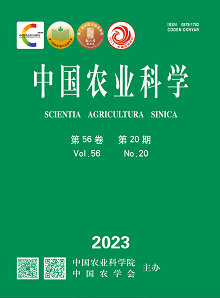【Objective】The North China Plain is the thermal resource limited area, summer maize grain mechanical harvesting technology were astricted by higher grain moisture content at harvest stage, which affects the quality of mechanical grain harvest. Under delayed harvest conditions, nitrogen application rate affect summer maize grain yield, and superior and inferior grains morphology and weight are not clear. Through the systematic observation of summer maize superior and inferior grains morphology, filling and dehydration process under different nitrogen application levels, clarified the regulation effect of nitrogen, and which provided support for summer maize grain mechanical harvesting technology cultivation to obtain stabilize yield, reduce nitrogen application and improve efficiency in the of region. 【Method】Summer maize grain mechanical harvesting hybrid Jingnongke 728 was used as the research materials, the field experiment were conducted in 2020-2021 by a harvest time and nitrogen application rate two-factor randomized block design, harvest time were normal harvest time (NH) and delayed harvest (DH), and six nitrogen application rate were 0 (N0), 120 (N120, 2021), 180 (N180), 240 (N240), 300 (N300), 360 (N360) and 450 kg hm-2 (N450, 2020). Summer maize grain yield (GY), superior and inferior grains fresh volume (GFV), fresh weight (GFW), dry weight (GDW), and moisture content (GMC) and their change rates were measured. 【Result】Compared to the dry year (2020), the inferior grains maximum grain filling rate (Gmax), the increment at Gmax (Wmax) and initial potential (R0) of GFV, GFW and GDW were significantly reduced in the rainy year (2021), and the days reached Gmax (Tmax) were delayed, and the active duration (P) were prolonged, which resulted in GFV, GFW and GDW reduced significantly by 15.4%-50.6%, 25.4%-62.0% and 31.2%-57.3%, respectively, however, there were no significant change in superior grains, and so led GY declined significantly by 3.03×103-5.44×103 kg·hm-2. The inferior grains GDWGmax, GDWWmax and GDWR0 in the rainy year were significantly decreased by 55.1%-258.1%, 13.4%-143.0% and 12.0%-126.6%, respectively, and GDWTmax were delayed by 4.2-20.7 d compared to superior grains. The superior grains GFV, GFW and GDW were significantly increased by 56.8%-69.6%, 67.0%-80.4% and 54.1%-92.1%, respectively, than inferior grains. Compared with NH, the grains Gmax and R0 at DH treatments were increased, and the P for superior and inferior grains were significantly prolonged, which led the GFV, GFW decreased significantly by 2.1%-8.1% and 12.2%-17.1%, 4.0%-5.2% and 15.7%-19.5, respectively, under the dry year and rainy year, meanwhile GDW increased from 25.1-28.2 g/100 grains to 28.0-34.4 g/100 grains, the GMC decreased from 22.6%-26.0% to 22.6%-26.0% as well, which were declined by 31.3%-40.4% than NH. The GY for DH were increased 0.02×103-1.67×103 kg·hm-2 than NH. There was no significant difference in GFV, GFW and GDW between nitrogen application levels in dry year. While in the rainy year, the GDWGmax and GDWWmax for N240-N360 treatment were significantly higher than N180, GDWTmax were delayed, and GDWP was prolonged (P<0.05), and the effects were more intense on inferior grains than on superior grains. Under DH treatment, the GFV, GFW and GDW of inferior grains for N240-N360 were significantly increased by 25.7%-85.3%, 59.4%-83.6% and 17.9%-43.9% than N180, respectively. The nitrogen yield increasing effect in rainy year were significantly intense than dry year, as 74.4%-169.5% vs. 51.5%-99.1%. GY of N240 was significantly rised by 12.6%-54.5% than N120-N180. 【Conclusion】In the thermal resource limited area of the North China Plain, changed winter wheat into spring wheat in the wheat-maize cropping system, with summer maize delayed harvest for 23-33 days, the inferior grains capacity and weight were significantly increased, and so the grain moisture content were reduced to the grain mechanical harvesting technology standard to realized the annual grain mechanical harvesting. And by optimized nitrogen application rate at 247.2-248.6 kg·hm-2, the production strategy of stable yield at 7.0×103-12.0×103 kg·hm-2, nitrogen reduction and improve efficiency under different rainfall years were achieved in the region.









